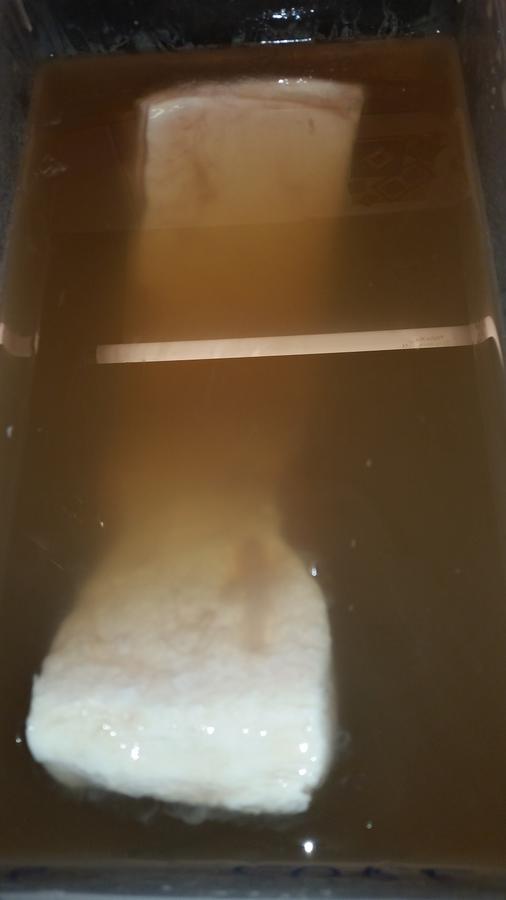The final batches are now out after 14 days in the brine
All of the brines are looking decidedly murky with a distinct sediment on the bottom of each container. The smell was slightly meaty but was not unpleasant
There were distinct threads in the brine and as the brine was poured away there was a thick slime that has sunk to the bottom of the containers. This was also on the surface of the meat but it washed off easily.
The joints were washed and then patted dry before weighing. They were then labelled and put on wire racks ready to equalise in the fridge. I will let them rest for 5 days before slicing and sampling.
Samples of each of the belly brines were also taken to be analysed - these were vac packed and frozen.
After 14 days there was a marked difference in weight increase between the loin and the belly. The loins were fairly similar at ~10% increase however the bellies increased in weight between 16%-20%
The trial is not complete but there are several things we can infer from the results so far:

All of the brines are looking decidedly murky with a distinct sediment on the bottom of each container. The smell was slightly meaty but was not unpleasant
There were distinct threads in the brine and as the brine was poured away there was a thick slime that has sunk to the bottom of the containers. This was also on the surface of the meat but it washed off easily.
The joints were washed and then patted dry before weighing. They were then labelled and put on wire racks ready to equalise in the fridge. I will let them rest for 5 days before slicing and sampling.
Samples of each of the belly brines were also taken to be analysed - these were vac packed and frozen.
After 14 days there was a marked difference in weight increase between the loin and the belly. The loins were fairly similar at ~10% increase however the bellies increased in weight between 16%-20%
| Brine | Meat | Days | Brine Volume | In Date | In Weight g | Out Date | Out Weight g | % Increase |
| 1 | Loin | 14 | 5 Litres | 02/02/2015 | 1096 | 16/02/2015 | 1205 | 1.10 |
| 1 | Belly | 14 | 5 Litres | 02/02/2015 | 997 | 16/02/2015 | 1194 | 1.20 |
| 2 | Loin | 14 | 5 Litres | 02/02/2015 | 930 | 16/02/2015 | 1017 | 1.09 |
| 2 | Belly | 14 | 5 Litres | 02/02/2015 | 1026 | 16/02/2015 | 1193 | 1.16 |
- There is a distinct difference between the two cuts of meat as to how much liquid that can be absorbed over a 14 day period. The pork belly was capable of absorbing twice the volume of brine than the loin
- The assumption that the pork will only take up 10% of its weight of the brine needs to be reviewed and the different cuts of meat need to be taken into consideration. In this experiment the belly was shown to take up up to 20%.
- With the more concentrated brine in pork belly, even discounting the diffusion of brine into the cellular fluids of the meat itself, it is possible/probable that the resulting nitrite in the belly pork will be at least 2 x that which was originally calculated. We cannot tell for sure though until we get the lab results.

Last edited:










